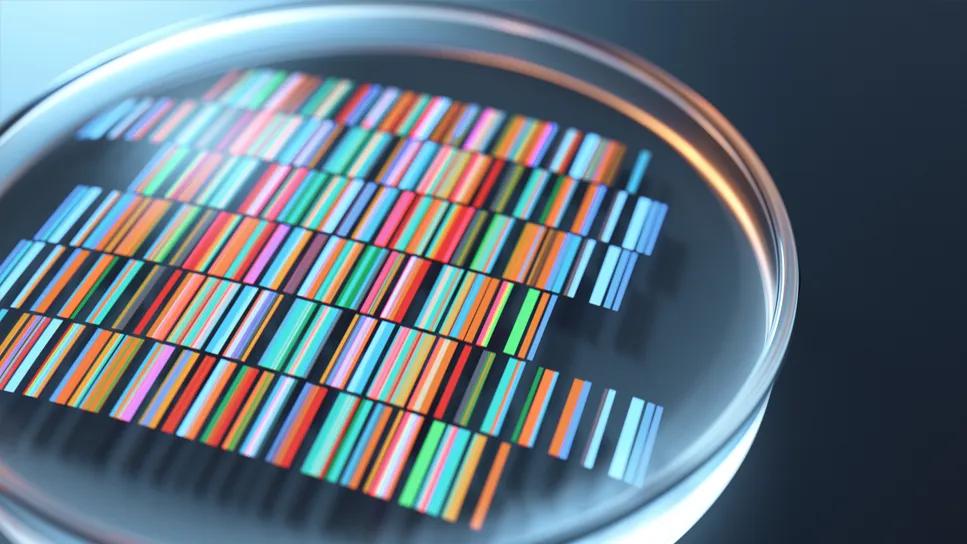Findings could lead to novel biomarkers and treatments

A heterogenous set of neuroinflammatory genes have been identified in men with chronic orchialgia that differ from those seen in asymptomatic men, a finding that could lead to novel biomarkers and treatments.
Advertisement
Cleveland Clinic is a non-profit academic medical center. Advertising on our site helps support our mission. We do not endorse non-Cleveland Clinic products or services. Policy
Chronic orchialgia, also called chronic scrotal contents pain, is defined as intermittent to constant testis pain lasting three or more months. It is estimated to affect up to 4% of men, but is under-appreciated. Patients with the condition often visit multiple different medical providers and undergo many diagnostic tests before receiving the diagnosis and treatment.
The condition can develop following trauma or surgeries such as vasectomy or hernia repair, but it’s often idiopathic. “In some cases of chronic orchialgia, there is an inciting event, such as a surgery. Those events don’t incite the condition in everyone, and, in other cases, there is no known inciting factor. So, there’s likely a genetic component as well,” says lead author Glenn T. Werneburg, MD, PhD, a urology resident at Cleveland Clinic.
In the new study, published in Urology, a comparison of nine men with chronic orchialgia who underwent microscopic spermatic cord denervation with seven asymptomatic controls undergoing vasectomies, genetic differences were found between the two groups in the tissues and urine. “How those relate and how those interact with some of those predisposing factors is an area for future work,” Dr. Werneburg observes.
Sarah Vij, MD, assistant professor in the Department of Urology and one of the study authors, says, “We believe this is the first study of its kind that identifies neuroinflammatory gene signatures associated with chronic orchialgia, and our findings confirm that the surgical target indeed possesses altered physiology.”
Advertisement
Identification of novel blood or urine biomarkers may be particularly useful given the clinical difficulty with diagnosis, she says. “The biomarkers may lead to earlier intervention and reduced cost.” She continues, “This might also provide a basis for a future biomarker to predict treatment response, improve patient selection, and eliminate the need for a trial of cord block prior to denervation.”
The investigators used the NanoString nCounter®, an automated platform that allows for direct and rapid measurement of mRNA expression in small samples for large numbers of genes and gene interaction networks. The specific assay they used, the NanoString Human Neuroinflammation panel, tests for nearly 800 genes related to inflammation and neuropathic pain.
Vas deferens tissue samples, spermatic cord fascia, blood, and urine were collected from the 16 men at the time of either microscopic spermatic cord denervation and or vasectomy, between January and December 2020. They had a mean age of 51 years and median symptom duration 12 months.
In the vas deferens, there were 26 genes with significantly differential expression, defined as a >2-fold change and p-value < 0.05 relative to controls. The greatest difference, a 30.2-fold change, was seen in cFos, a marker of nociceptive pain (P < .001).
In the spermatic cord fascia, there were significant differences in expression of 14 genes, with cFos again having the greatest differential expression, of 38-fold, between the men with chronic orchialgia and those who were asymptomatic (P < 0.001). Also significant was the 11-fold difference in expression of S100A12, an inducer of innate immune response (P < 0.001).
Advertisement
While there were no differentially expressed genes in blood, there were many such genes identified in the vas deferens and spermatic cord fascia. This finding supports the hypothesis of chronic orchialgia as a local rather than systemic condition, Dr. Vij asserts.
Indeed, Dr. Werneburg notes, “The findings supported our hypothesis that there’s a genetic component to it and that it appears to be local,” adding, “This study opens up new opportunities for identifying potential biomarkers in these men, which may help us in diagnosis. It may also help us in counseling regarding the prognosis following an intervention.”
The next step, Dr. Werneburg says, “would be to understand how some of these genes can be used to help predict or to help diagnose men with chronic orchialgia as well as help us predict response to treatments for this condition.”
And, the study implications aren’t limited to just one condition. “Within urology, we’ve looked at some different chronic pain conditions like interstitial cystitis with similar approaches. To be able to understand whether there are commonalities between these different conditions and whether we can target them in new ways that might overall help with chronic pain will also be of interest moving forward.”
Advertisement
Advertisement

Pediatric urologists lead quality improvement initiative, author systemwide guideline

Fixed-dose single-pill combinations and future therapies

Reproductive urologists publish a contemporary review to guide practice

Two recent cases show favorable pain and cosmesis outcomes

Meta-analysis assesses outcomes in adolescent age vs. mid-adulthood

Proteinuria reduction remains the most important treatment target.

IgA nephropathy is a relatively common autoimmune glomerular disease that can be diagnosed only by biopsy

Oncologic and functional outcomes are promising, but selection is key